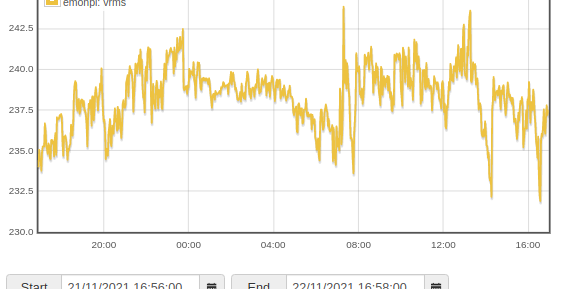Hello!
I’ve decided I want to get into the realm of gas and electricity monitoring.
I’ve been looking at an all-in-one solution for some time and initially came across the Saveometer. Whilst the Saveometer fits the pre-requisite of being an all-in-one solution it isn’t really for me given I can’t get the data off of the device. There are cloud solutions out there but want to stay well clear of them because of the inevitable bricks that the devices will become and thus have been searching for something that will meet my needs and, well, here I am. I’ll be honest I didn’t quite understand the respective parts of the emonXX range at first but I’ve stuck with it and I’m fairly confident Open Energy Monitor will fit my needs.
A little back ground on my meters:
- Gas - Elster BK-G4M
- Electricity - Landis + Gyr E110
This is where I think I am at the second in terms of the items I’m lining myself up to buy:
- 2x emonTH
- RFM69Pi
- Optical Utility Meter LED Pulse Sensor
- Reed switch
But I have a few questions and concerns that I’ll talk through below.
- I’m still not too settled on whether or not to use the CT sensor over the LED Pulse Sensor for the electricity monitoring. There’s a few pros/cons for both that I have been able to glean from various sources here and on the web.
I understand that the emonTH can’t be used for CT sensing however I feel easier that a cheaper device is placed within an accessible area. It’s not that I think it’ll go walkies but £40 is better to lose than £60 in my opinion (£80 for two emonTh vs £100 one emonTx and one emonTh since ultimately there’ll be two monitors placed outside). Both meters are external.
Additionally on the emonTx shop page I noticed this:
The EmonTx can be optionally powered by 3x AA batteries. Select the 3x AA battery holder option above if you wish to use this option. In order to preserve battery life the EmonTx needs to go to sleep between readings, we upload our discrete sampling firmware to the EmonTx to achieve this rather than the standard continuous sampling firmware. The discrete sampling firmware is less accurate than the continuous sampling firmware so its worth only selecting this option if you need to power the EmonTx from battery power.
This is exactly how I’d be powering the monitors for my energy meters since there’s no accesible power source nearby. The electricity box is just the meter, master switch and tails into the distribution board inside.
- I run a home lab and have a rack mounted server thus can host my own virtual machines without the requirement of any additional hardware like a Raspberry Pi. My OS of choice is Ubuntu Server and RDBMS of choice is PostgreSQL.
These are my questions to the above thoughts/concerns:
1.1 If my gas monitoring is using a pulse sensor why should I care about using a CT sensor for electricity monitoring?
1.2 Given that the emonTx is less accurate in my use case, will using an emonTH with a pulse sensor be more accurate over using an emonTx with a CT sensor and powered by batteries?
2.1 I’d rather not have a separate Raspberry Pi running just to receive data from the monitors, as I have existing infrastructure I’d like to utilise, is there any way that I could consume the data without the need for a Raspberry Pi? I was potentially thinking by using a USB stick of some sort.
2.2 The github page outlines that MariaDB or MySQL is listed as a requirement however within the issue history there’s a post about making the database agnostic, can I use PostgreSQL as the database backend?
2.3 If emoncms itself cannot use PostgreSQL is there any other way to consume the data from the monitors that I could potentially log into the likes of Zabbix, InfluxDB etc?
I think that’s all of the questions I had, I’d appreciate any feedback and insight anyone can provide, thanks!


